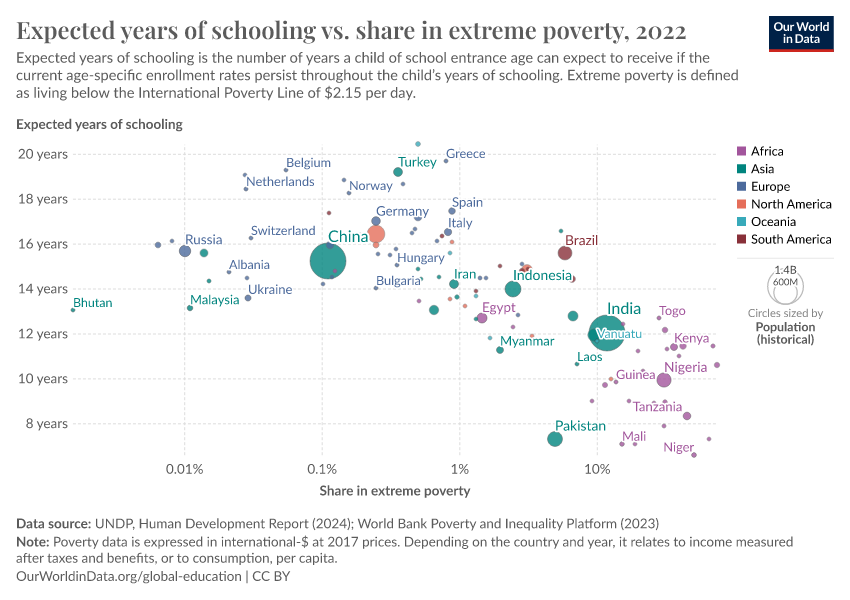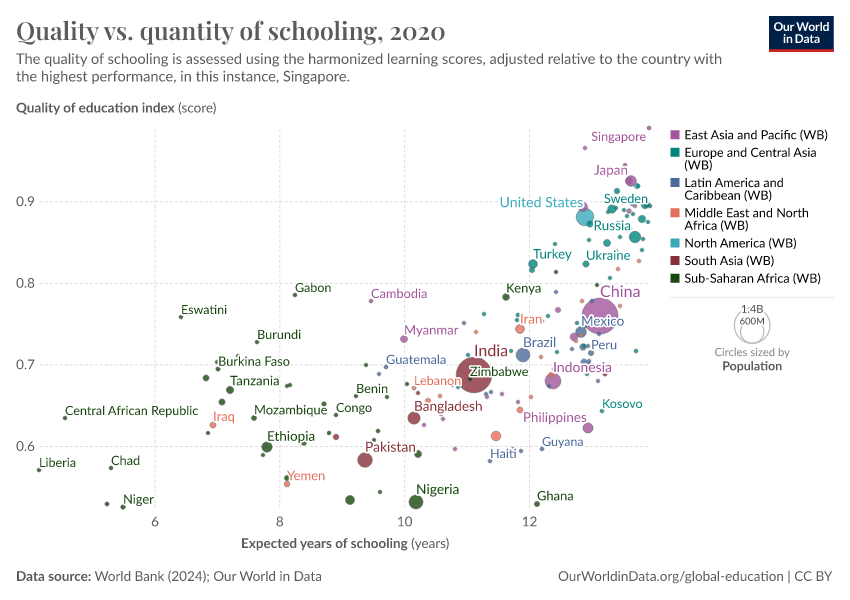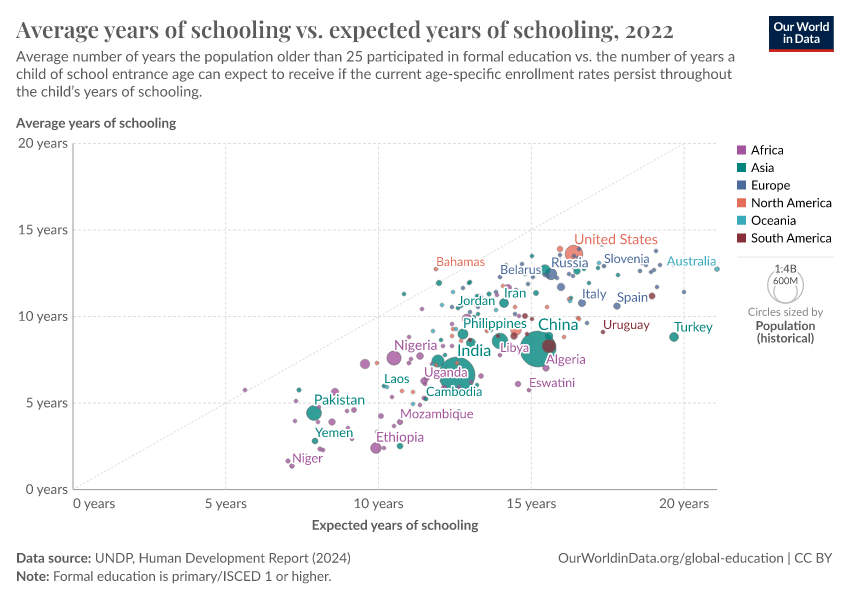Expected years of schooling

What you should know about this indicator
- This indicator shows how many years a student starting school in that year is expected to spend in education. It's based on the enrollment patterns observed in that country in that specific year.
- The calculation looks at how many students are enrolled at each age and education level, then estimates how long a new student would stay in school if those patterns continued. This includes time spent repeating grades, not just the official length of each school level.
- It measures participation in schooling - how long students are likely to stay in school - rather than whether they actually learn or graduate.
- Higher numbers mean students spend more years in school, either because the official school system is longer or because many students repeat grades.
- UNDP originally obtained this indicator from: ICF Macro Demographic and Health Surveys (various years), UNESCO Institute for Statistics (2024) and United Nations Children's Fund (UNICEF) Multiple Indicator Cluster Surveys (various years).
What you should know about this indicator
- This indicator shows how many years a student starting school in that year is expected to spend in education. It's based on the enrollment patterns observed in that country in that specific year.
- The calculation looks at how many students are enrolled at each age and education level, then estimates how long a new student would stay in school if those patterns continued. This includes time spent repeating grades, not just the official length of each school level.
- It measures participation in schooling - how long students are likely to stay in school - rather than whether they actually learn or graduate.
- Higher numbers mean students spend more years in school, either because the official school system is longer or because many students repeat grades.
- UNDP originally obtained this indicator from: ICF Macro Demographic and Health Surveys (various years), UNESCO Institute for Statistics (2024) and United Nations Children's Fund (UNICEF) Multiple Indicator Cluster Surveys (various years).
Sources and processing
This data is based on the following sources
How we process data at Our World in Data
All data and visualizations on Our World in Data rely on data sourced from one or several original data providers. Preparing this original data involves several processing steps. Depending on the data, this can include standardizing country names and world region definitions, converting units, calculating derived indicators such as per capita measures, as well as adding or adapting metadata such as the name or the description given to an indicator.
At the link below you can find a detailed description of the structure of our data pipeline, including links to all the code used to prepare data across Our World in Data.
Reuse this work
- All data produced by third-party providers and made available by Our World in Data are subject to the license terms from the original providers. Our work would not be possible without the data providers we rely on, so we ask you to always cite them appropriately (see below). This is crucial to allow data providers to continue doing their work, enhancing, maintaining and updating valuable data.
- All data, visualizations, and code produced by Our World in Data are completely open access under the Creative Commons BY license. You have the permission to use, distribute, and reproduce these in any medium, provided the source and authors are credited.
Citations
How to cite this page
To cite this page overall, including any descriptions, FAQs or explanations of the data authored by Our World in Data, please use the following citation:
“Data Page: Expected years of schooling”. Our World in Data (2025). Data adapted from UNDP, Human Development Report. Retrieved from https://archive.ourworldindata.org/20251209-133038/grapher/expected-years-of-schooling.html [online resource] (archived on December 9, 2025).How to cite this data
In-line citationIf you have limited space (e.g. in data visualizations), you can use this abbreviated in-line citation:
UNDP, Human Development Report (2025) – with minor processing by Our World in DataFull citation
UNDP, Human Development Report (2025) – with minor processing by Our World in Data. “Expected years of schooling – UNDP” [dataset]. UNDP, Human Development Report, “Human Development Report” [original data]. Retrieved December 24, 2025 from https://archive.ourworldindata.org/20251209-133038/grapher/expected-years-of-schooling.html (archived on December 9, 2025).

